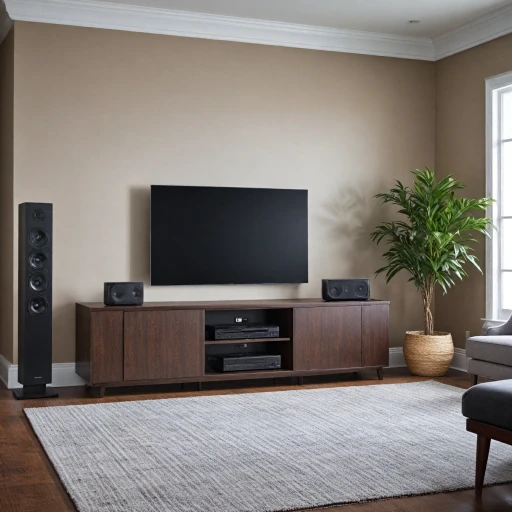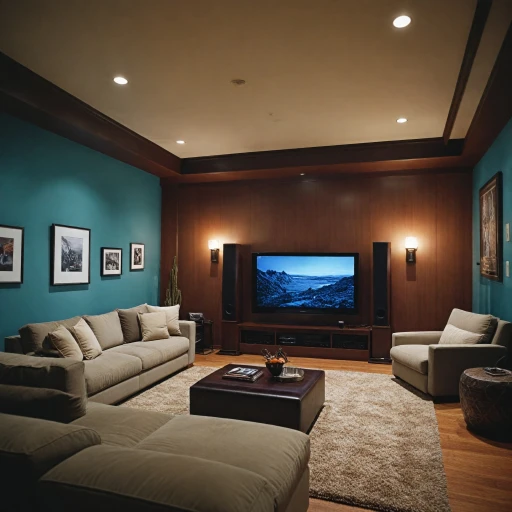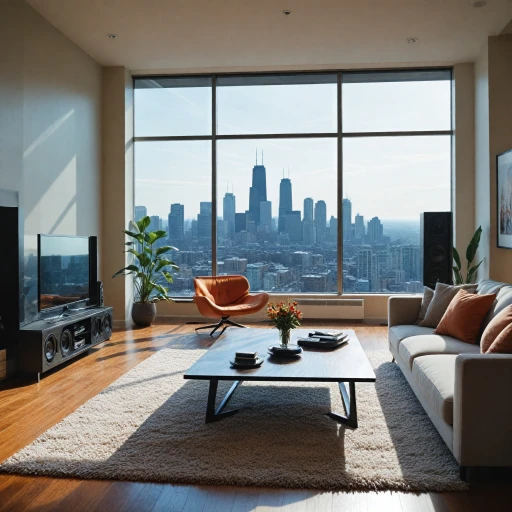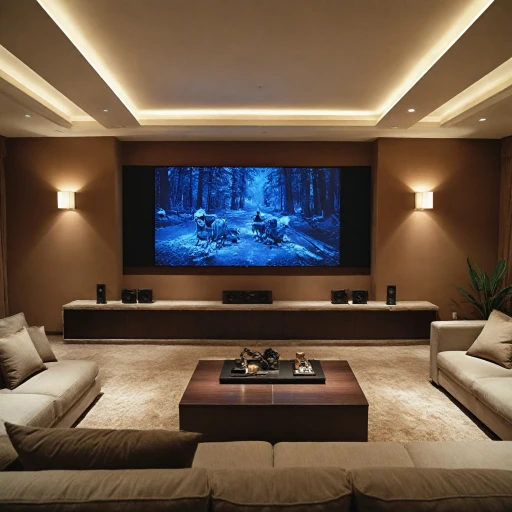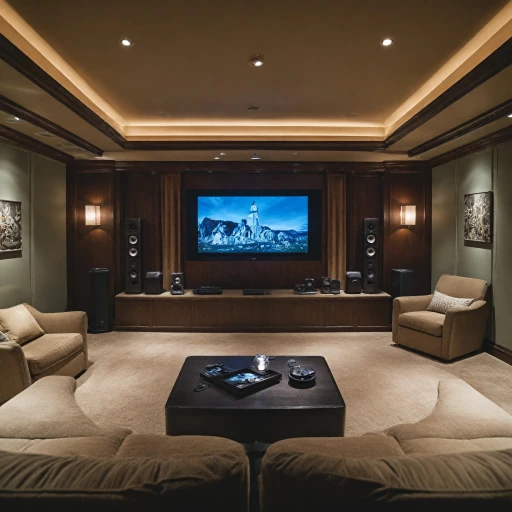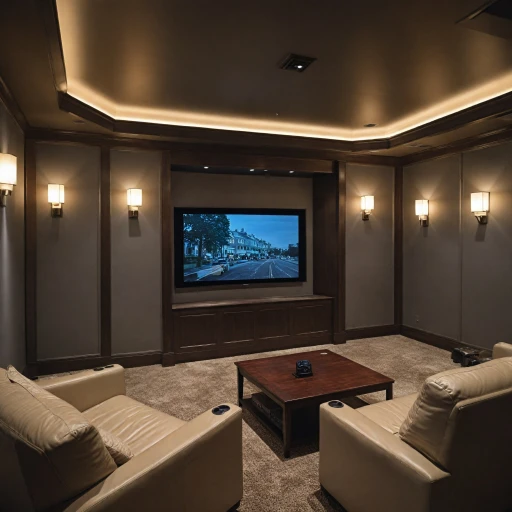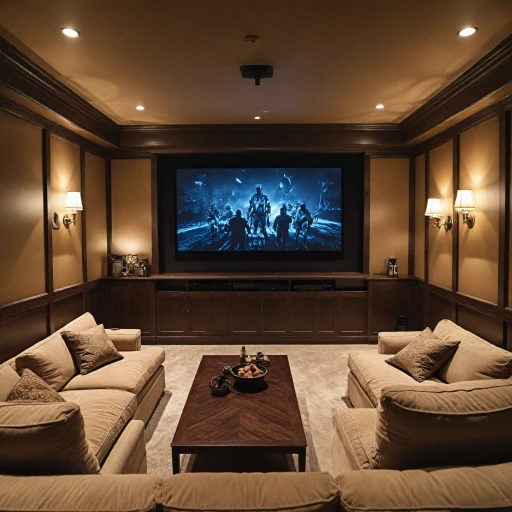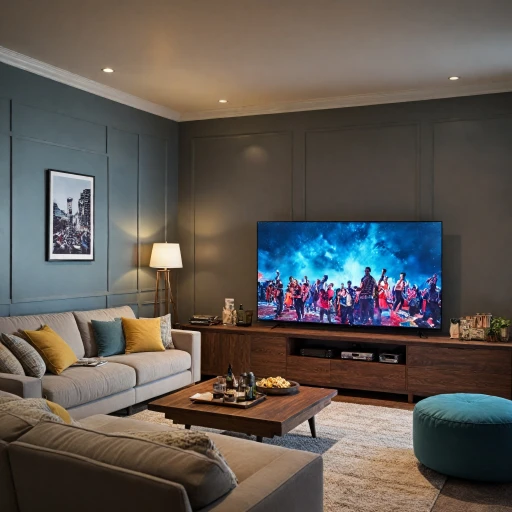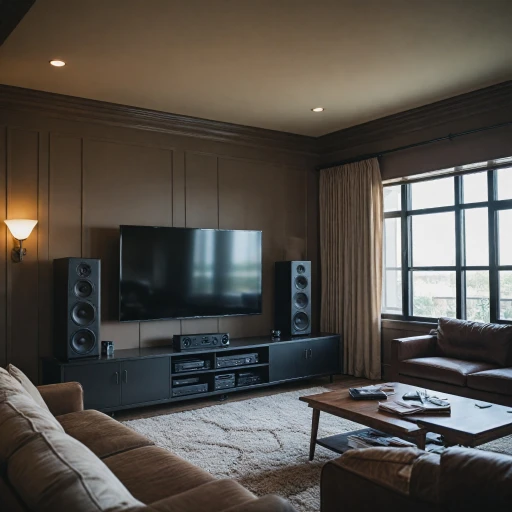Understanding the Role of Speaker Stands
The Importance of Speaker Stands in Your Home Theater Setup
Understanding the role of speaker stands is crucial in any home theater environment. These versatile accessories are more than just a place to rest your speakers; they contribute significantly to the overall audio experience by ensuring your sound system performs optimally.
Speaker stands are designed to elevate and support your speakers, whether you're using bookshelf speakers or a more extensive system with a subwoofer pole. By placing the speakers at ear level, you can ensure that audio is projected directly to you for a more immersive experience. This elevation helps to reduce floor interference and unwanted vibrations, creating a cleaner sound.
Another notable advantage is the ability to organize speaker cables and accessories efficiently. With options like floor stands or wall mounts, you can manage your setup to minimize cable clutter and keep your audio equipment tidy.
Adjustable speaker stands offer flexibility for any setup, allowing you to modify the height as per your seating arrangement. Whether you're using a pair of studio monitor stands or a single center channel mount, these stands help to maintain the right audio dispersion.
Learn more about how a center speaker stand can further enhance your home theater experience by properly situating your audio equipment, supporting better acoustics, and maintaining the aesthetic appeal of your living space.
Choosing the Right Speaker Stands for Your Setup
Selecting Speaker Stands That Suit Your Needs
Choosing the right speaker stands involves careful consideration of the setup and the specific audio equipment you have. While factors like price and brand might be the first things to consider, understanding the various features is crucial to maximizing your audio setup. First, take into account the type of speakers you have. There are dedicated stands designed for bookshelf speakers, studio monitors, and even subwoofers. If you have bookshelf speakers, you need stands that support their size and weight, providing stability and reducing vibrations. The market offers a variety of speaker stands, including adjustable speaker stands that allow you to change the height according to your seating position. Options such as heavy-duty floor stands or tripod speaker mounts provide robust support for larger studio monitor speakers. Assess whether an adjustable height feature is necessary for your setting. Consider speaker stands with integrated cable management to keep audio cables neat and organized. This feature prevents tangles and provides a clean, professional look to your home theater. Some models offer pole or rack mounts to handle different speaker configurations, which can be beneficial for custom setups. Additionally, consider the accessories that come with the stands, as these can enhance functionality and ease of use. Look for stands mounts that include a secure mount or enough support for heavier models, like a center channel or subwoofer pole. For those who prefer a more customized touch, building your own speaker stands can be a viable option. However, this requires careful planning to ensure stability and safety. Alternatively, commercial speaker stands offer a ready-made solution with guaranteed specifications. Ultimately, the choice of speaker stands should enhance your audio setup, complementing the aesthetic of your home theater. To learn more about optimizing your home theater setup with innovative additions, explore our article on enhancing your home theater experience with a bass shaker. This resource provides additional insights into elevating your audio-visual enjoyment with unique accessories.Positioning Your Speakers for Optimal Sound
Strategic Placement for Superior Sound
The arrangement of your speakers can significantly impact your audio experience, making it crucial to position them with care. It's not just about stashing them away neatly—each speaker, including bookshelf speakers and floor stands, has to be thoughtfully placed for the best acoustic performance.
Begin with the front speakers—a pair typically flanking the screen. Utilize adjustable speaker stands or floor stands that provide flexibility in height and angle, ensuring the tweeters are roughly at ear level when seated. This optimally projects sound toward the listeners without obstruction.
Your center channel, crucial for dialogs, should be centrally located either just above or below your screen. If available, use a sturdy rack or wall mount to keep it secure and aligned with your front speakers, creating a seamless audio flow across your home theater space.
To infuse the room with deeper bass tones, position the subwoofer along a wall or corner. This placement can enhance low-frequency resonances, making the audio feel fuller and more immersive. For those using a subwoofer pole or stand, adjustments in height could further fine-tune the output.
Finally, remember the importance of rear speakers which might include studio monitors or smaller bookshelf speakers. These can be placed on wall mounts or stands speaker mounts strategically around the viewing area to envelop the listener in surround sound. Using heavy-duty speaker stands or adjustable stand mounts caters to diverse room configurations and preferences.
Key accessories like adjustable stands and speaker mounts not only provide practical solutions for your audio setup, but they can also clear visual clutter by organizing cables. With the right arrangement supported by speaker stands, you can transform your home environment into a cinematic haven that rivals the magic of traditional theaters.
Material and Design Considerations
Key Material and Design Features to Consider
When seeking the ideal speaker stands for your home theater setup, understanding the material and design considerations is crucial. Building a formidable audio experience involves selecting a stand that not only supports your equipment but also complements your home decor. Here are some factors to guide your choice:
- Material: The material of the speaker stand significantly impacts stability and acoustics. Common materials include wood, metal, and glass. While wooden stands tend to add a classic look and can be quite stable, metal options are popular for their durability. Meanwhile, glass stands offer a modern aesthetic, though they may require more frequent maintenance to keep clear and streak-free.
- Design: When it comes to design, it is important to think about how it complements or clashes with your current room setup. Look for stands that match the visual aesthetics of your audio equipment and room. The design should also facilitate cable management, ensuring cables are neatly organized and reducing clutter.
- Adjustable Feature: Consider if adjustable height stands will benefit your setup. Having the flexibility to modify the stand to ear level can enhance your listening experience significantly. This feature is particularly beneficial for studio monitor speakers and bookshelf speakers, where precision in height alteration can improve sound projection.
- Weight Capacity: Knowing the weight capacity of the speaker stand is critical. Opt for heavy-duty options if you have larger and heavier speakers to ensure safety and stability.
- Style: Whether opting for floor stands, wall mounts, or even an elegant tripod speaker stand, the type of stand must match both your aesthetic and technical requirements. Each style has its own set of benefits; for instance, wall mounts save floor space, while floor stands may be easier to reposition.
By carefully evaluating these material and design components, you will find a pair of speaker stands that not only supports your speakers but enhances the overall audio experience in your home theater setup. Remember, the right choice in speaker stands complements your audio equipment, ensuring optimal sound delivery.
DIY vs. Commercial Speaker Stands
Exploring the Options: DIY or Commercial Speaker Stands
When it comes to enhancing your home theater experience, deciding between DIY and commercial speaker stands is a crucial choice. Each option has its unique set of benefits and challenges, and understanding these can help you make an informed decision. DIY speaker stands offer a personalized touch to your audio setup. Enthusiasts often choose this route for the creative freedom it provides. By building your own stands, you have the flexibility to customize everything from the height (making it adjustable) to the materials used. If you have a knack for woodworking or metalworking, crafting your stands can be both a cost-effective and rewarding project. Moreover, by selecting specific materials and dimensions, you can tailor the stands to perfectly fit your room’s acoustics, ensuring optimal sound performance. On the other hand, commercial speaker stands are designed with precision and come in a wide range of styles, sizes, and budgets. Brands often incorporate features that cater to audiophiles, such as heavy-duty stands, adjustable heights, and robust mounts designed for both bookshelf speakers and floor stands. These products typically undergo rigorous testing to guarantee they provide stable support and do not interfere with audio quality. If convenience and professional-grade results are priorities, commercial stands might be the ideal choice. Here are a few considerations when pondering between DIY and commercial options:- Price: DIY stands can be more affordable if you already have the necessary tools and materials. However, high-quality commercial stands often come with a justified price tag due to their durability and design.
- Aesthetic and Design: DIY projects provide the freedom to match the stands to your existing decor, whereas commercial options offer sleek, professional designs straight out of the box.
- Skill Level: Consider your own skill level. Successful DIY stands require a certain degree of craftsmanship, while commercial stands usually only require minimal assembly.
Maintenance and Care for Speaker Stands
Preserving Your Speaker Stands for Longevity
Ensuring that your speaker stands remain in top condition is crucial in maintaining their functionality and appeal, ultimately enhancing the audio experience in your home theater. Regular maintenance and care are essential aspects that can prolong the life of both the speaker stands and the speakers they support.
- Inspecting Connections and Mounts: Regularly check the connections between the stand and the speakers, especially if you frequently adjust or move them. If you’re using adjustable mounts or pole mounts, ensure that all parts are securely fastened to avoid accidental slips that may damage your speakers.
- Cleaning and Dusting: Dust and debris can accumulate on both the stand and the cables over time. Use a microfiber cloth to gently wipe down both surfaces. For more stubborn spots, a slightly damp cloth can be used, but ensure that water doesn’t seep into any connections or joints.
- Managing Cables: Properly managing cables is a vital part of speaker stand maintenance. Cables can not only get tangled but also put stress on the connections they attach to. Cable clips or ties can help in neatly organizing the cables running from your speakers.
- Secure Positioning: Double check that the stands are on a stable surface, especially when using floor stands or tripod speaker stands. An uneven base can lead to wobbling, which might compromise sound quality and risk damage to your speakers.
- Material Care: Pay attention to the material of your stand, be it wood, metal, or plastic. Specific cleaning products might be necessary to maintain their luster or prevent damage.
- Wall Mounts & Shelf Options: If your setup includes wall mounts or bookshelf-based speaker stands, ensure that the installation is still secure. Over time, wall mounts can loosen, especially if they weren't initially installed using heavy-duty mounts.
Whether you've chosen a commercial stand or tackled a DIY project, appropriate care will keep your setup looking and sounding excellent. This effort will ensure that your home theater system remains an enjoyable and reliable fixture in your home.

